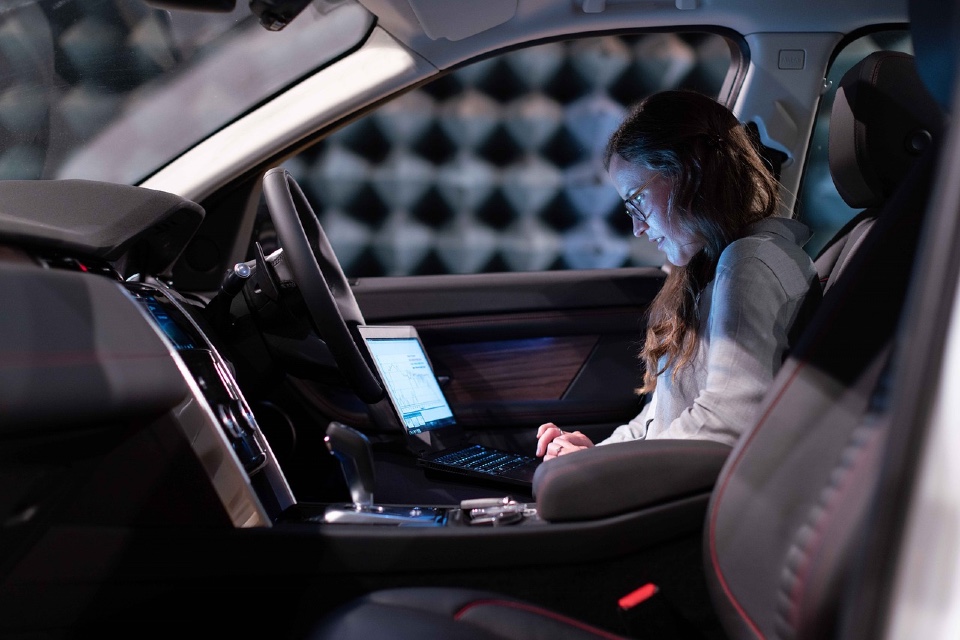The automotive industry is moving forward rapidly with the help of software applications and Artificial Intelligence (AI). Vehicle data has become a crucial asset for automotive companies, helping to accelerate their digital transformation. Going digital has become essential for the auto industry nowadays and requires reliable and trustworthy automotive software.
Here’s what you need to know about Automotive Software.
1. Autonomous Vehicles
Autonomous vehicles can operate without human intervention and work in the same way as traditional cars. These vehicles rely on Artificial Intelligence (AI) to sense their environment, allowing them to know what’s going around their surroundings. AI can recognise objects and identify whether they are a person, another vehicle, etc. They can also detect if these objects are moving or stationary. AI must predict what will happen next and pass this information to the decision software to decide the next course of action.
Autonomous vehicles rely on sensors, complex algorithms, actuators, machine learning systems, and processors to execute software. The software is responsible for processing the sensory input, establishing a path, and sending instructions to the actuator that controls the acceleration, steering, brakes, etc. Hard-coded rules, object recognition, and predictive modelling help software follows traffic rules and navigate any obstacle. Automotive companies need to recruit automotive software engineers to check the car and ensure the software works efficiently.
Developing an autonomous vehicle is a complex process. Whether retrofitting an existing vehicle or building one from scratch, there’s plenty of work involved. Automotive software engineers will not only need to program more than 200 million lines of code on the vehicle’s hardware, but they must also navigate through the tools and programs to develop, optimise, deploy, and manage the software of autonomous vehicles.
However, not all autonomous vehicles are the same. These vehicles rely on different tools to operate. Automotive software engineers use more than a hundred different tools to build and maintain these vehicles. Luckily, automotive software tools and platforms are constantly evolving, which helps to improve the accuracy of autonomous driving software.
2. Electrification
Vehicle electrification means powering the vehicle with electricity and replacing every component that uses conventional energy sources with those that use electricity. It focuses on the powertrain driven and its auxiliary systems, including on-board and off-board charging systems and wireless power transfer. Electrification also covers several other functionalities, such as the electronic stability program, electronic-powered steering, intelligent light system, electronic traction control, airbag deployment system, and many more. Electric vehicles rely on software to manage their battery systems and other key critical functions. Software is also crucial for protecting these vehicles against cyberattacks.
The main objective of vehicle electrification is to replace the gasoline drive with an electric powertrain. With an electric powertrain, a traction battery pack will use the energy stored in it to operate the motor with the help of the power electronics converter. When you step on the brake, electric energy gets moved back to the battery through the regenerative braking system. The converter’s control technique and topology will vary depending on the electric motor type.
Electric vehicles must be plugged into a charge point and take electricity from the grid to work. It then stores the electricity through the rechargeable batteries powering its electronic motor and is responsible for turning the wheels. Electric vehicles accelerate faster compared to those that operate with traditional fuel engines. Therefore, they are much lighter to drive. To charge the electric vehicle, plug it into a home charger or a public charging station. There are now several charging stations in various countries worldwide, so your car stays fully charged as you go out and about. When using home charging, ensure you have the right EV electricity tariff to save money on your electric bill.
The distance you can travel on a fully charged vehicle will depend on various factors, but the main factor is the vehicle type. Each EV has a different battery size, range, and efficiency. Choose the vehicle you can use for your everyday journeys without having to stop and recharge halfway through.
3. Connectivity (IOT)
Automotive IoT is a complex system of devices connected to the cloud, offering real-time data to optimise the process of manufacturing vehicles and develop a more efficient transport system. IoT solutions transform vehicles into “smart transportation” by leveraging AI-powered driving assistance, direct car-to-car interaction, predictive maintenance, and other advanced features to enhance road safety and improve driving efficiency. Most car manufacturers rely on IoT to automate production processes, minimise human errors, and improve quality control.
Connected cars have simplified things for both the manufacturers and the drivers, especially in terms of software upgrades. Vehicles are becoming increasingly more complex as time goes by. Before, the only way to keep cars updated is returning them to the dealer, which can be an inconvenience for the car owners and very costly for the manufacturers. Thanks to IoT connectivity, it’s now possible to update the software-reliant components of vehicles remotely.
Automotive IoT can also help improve vehicle performance. Electronic vehicle manufacturers have been regularly sending software fixes, such as suspension lifts and battery performance. Automotive IoT developments will cover more updates in the future, specifically related to feature enhancements.
Another benefit of IoT in the automotive industry is providing a clear picture of the manufacturing floor. Industrial IoT solutions can collect enormous amounts of data during vehicle production. Real-time processing and analysis of data collected can help manufacturers optimise the production process, introduce higher standards for safety, and minimise losses. The data that the IoT sensors collect can be analysed to predict failure car conditions, alerting users to take proper safety measures to avoid malfunctions and minimise car maintenance costs.
Thanks to IoT, car owners can now enjoy a range of vehicle entertainment systems, telematics, navigation solutions, driver assistance systems, and other features that can improve efficiency and comfort. In addition, IoT-enabled safety features like pedestrian and lane detection, object recognition, and automatic braking systems offer driving assistance to minimise human errors and make vehicles safe for everyone.







